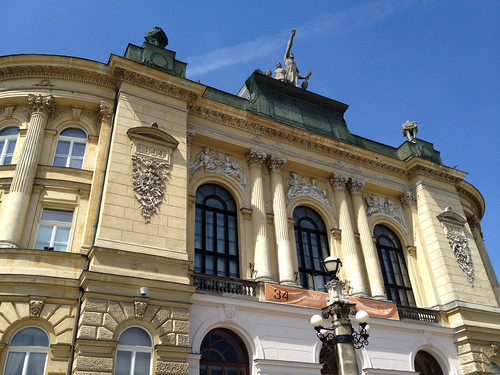Poland’s Rich Scientific History
- By Maggie Masetti
- November 30, 2012
- Comments Off on Poland’s Rich Scientific History
This past summer, I took a trip to Poland, specifically, Warsaw and Krakow. My husband was there for a scientific conference, and I was there as a tourist, but I was amazed at the amount of science and science history there was to be found whilst seeing touristy things.
One of the first places I went was the Royal Palace in the Old Town section of Warsaw. The Palace (and Old Town) were completely destroyed in World War II (along with most of the rest of Warsaw), but it has since been rebuilt. Inside of the palace were some of the original furnishings, which had been saved, and other acquired antique pieces. One of the most unique things was this astronomically-themed, working 18th century clock. The Roman numerals are the hours and underneath are the minutes. The scythe reads the time. So for instance, these photos were taken around 11:15. (XI plus 15)

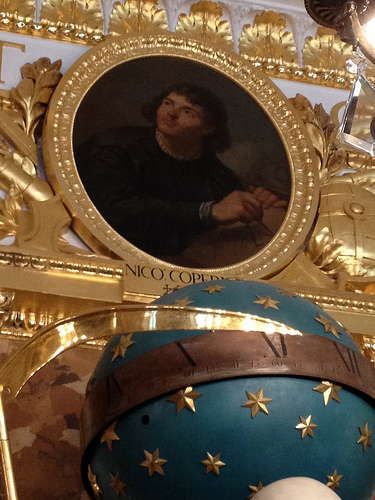
Above the clock is a portrait of Copernicus.
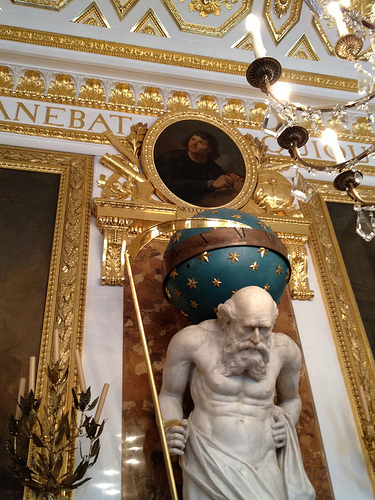
Nicolaus Copernicus was a famous Polish astronomer. His model of the solar system with the sun at the center revolutionized astronomy. (In my blog about the “Beautiful Science” exhibit, I describe actually getting to see Edwin Hubble’s copy of Copernicus’ “On the revolution of heavenly bodies”, a second edition, dating to 1566.)
This was the first, but not the last time I would see Copernicus in Poland. He popped up in many places.
Here he is on the ceiling of the old library in Wilanow Palace in Warsaw. The books were organized by subject, and Copernicus’ presence signified that science books were filed in that corner of the room.

Copernicus also sits in front of the Polish Academy of Science – in statue form.
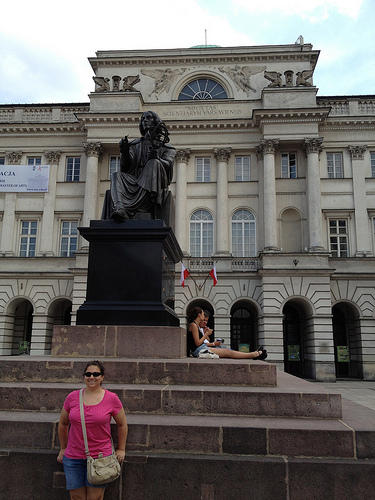
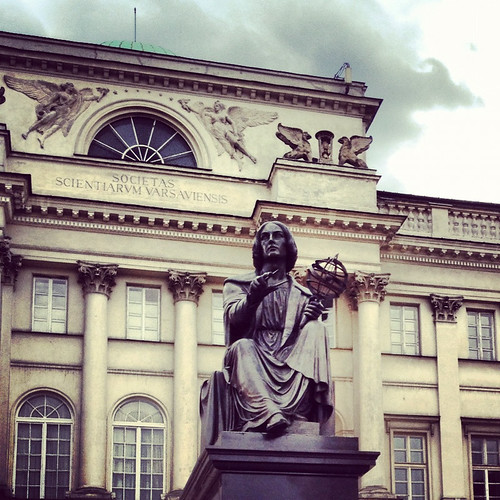
Copernicus also has a statue in the Wieliczka Salt Mine in Krakow, which was built in the 13th century. Reportedly he visited there – and now there is a statue of him made of rock salt in the mine!
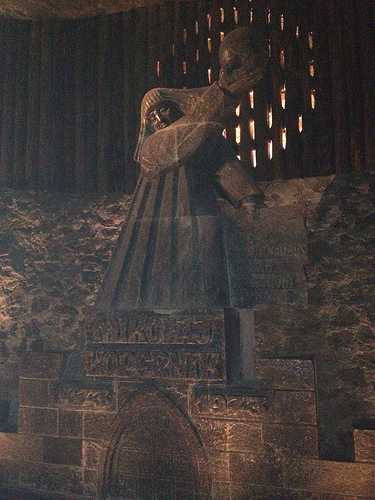
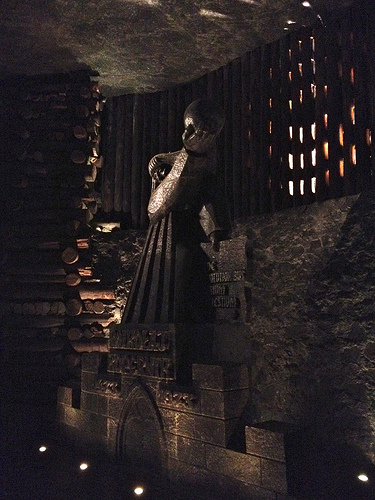
Another famous Pole is the scientist and two-time Nobel Laureate (in Physics and Chemistry) Marie Skłodowska-Curie. She was born in Warsaw and her birthplace is now a museum dedicated to her.
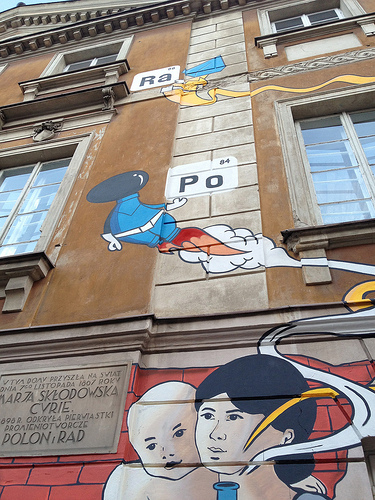
The art on her former home reflects her discovery of the elements Polonium (named for Poland) and Radium.
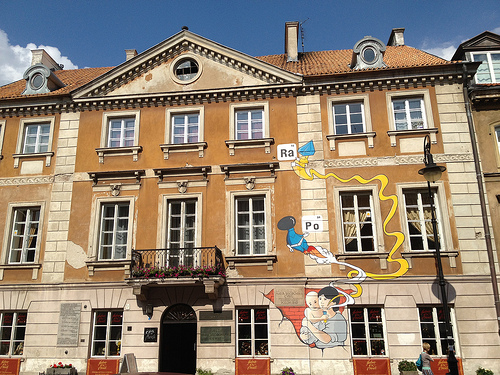
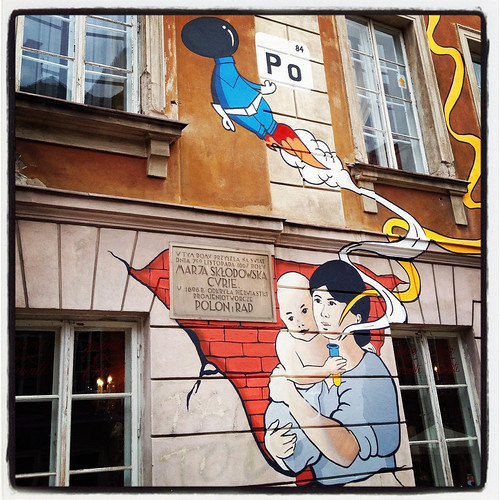

The museum had one of Marie Curie’s chemistry books:
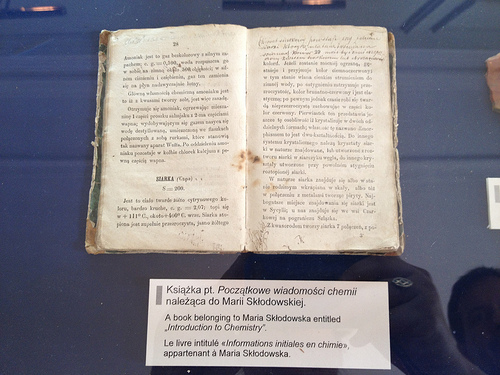
They also had some of her lab equipment:
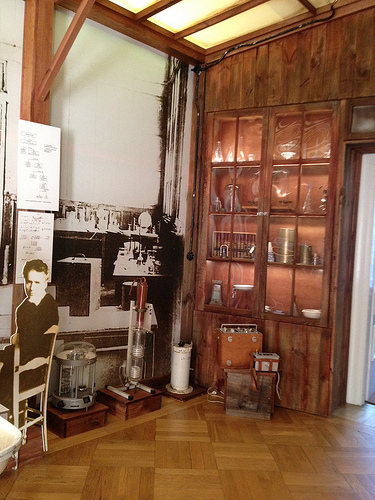
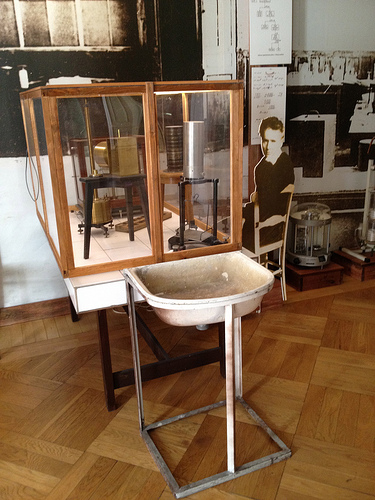
I’ll leave you with the view of the Polytechnika in Warsaw – a place of modern science learning in a country with a rich history of science.
